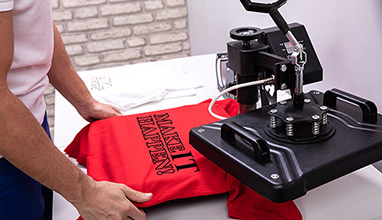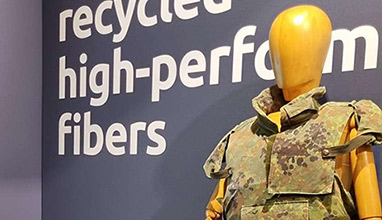Maximizing Margins: Effective Pricing Strategies for T-Shirt Retail Business
Finding the right balance between pricing strategies for t-shirts, setting a competitive retail price, covering t-shirt costs, and maintaining a healthy profit margin is no easy feat. However, you can thrive in the market and establish a strong online presence with the right pricing strategies. Learn t-shirt pricing tips to maximize your margins and build a successful t-shirt business.

Photo: Depositphotos
Understanding the T-shirt cost and retail price
When it comes to a custom t-shirt pricing strategy, it's crucial to factor in the t-shirt price and the desired profit margin.
Calculating T-shirt production cost
Before determining the retail t-shirt price, you must clearly understand the production cost. This price includes material costs, printing, labor, and any overhead expenses associated with running your business. Streamlining your pricing process can also be accomplished with a t-shirt pricing calculator readily available online.
Material costs
Material costs refer to the expenses incurred in acquiring the blank t-shirts that serve as the canvas for your custom-sell t-shirts and designs. The quality and style of the T-shirts you choose vary in price. Sourcing high-quality, cost-effective materials is essential to maximizing the price of your t-shirts and profit margins.
Compare prices from well-known suppliers, consider shipping costs, negotiate a bulk price, and consider the fabric type, whether cotton or polyester. (https://www.shirtmax.com/t-shirts/adult/100-polyester).
Printing and labor costs
Printing costs involve the costs associated with customizing your t-shirts, including screen printing, direct-to-garment (DTG) printing, or heat transfer methods. Labor costs pertain to the wages paid to your production team.
Efficient printing methods and skilled labor can streamline production, reducing overall costs. You can also explore automation options to increase efficiency and lower labor costs.
Overhead expenses
Overhead expenses encompass all the costs required to keep your t-shirt business running smoothly, including rent, utilities, and marketing expenses. Consider cost-effective marketing strategies like social media and email marketing to maximize margins.
Implementing energy-efficient solutions for all your expenses can also reduce utility costs, contributing to higher profit margins and lower total costs.
Setting the profit margin percentage
Once you've calculated your production costs, it's time to set the t-shirt retail price and profit margin percentage. This percentage represents the profit you aim to make on each shirt sold. It's important to balance a competitive price and a profit margin that sustains your business.
T-shirt pricing strategies
Psychological pricing
Psychological pricing is a strategy that involves setting prices that appeal to the psychological perceptions of consumers. This strategy often includes pricing items just below a whole number, such as cheap shirts, at $9.99 instead of $10. This subtle difference can make a product more affordable and attractive to buyers. Experimenting with pricing tactics like this can help you find the sweet spot for your shirt prices.
Bundle pricing
Bundle pricing is an excellent strategy for selling custom t-shirts in larger quantities. Offering discounts when customers purchase multiple shirts for retail encourages them to buy more, increasing your average price, transaction value, and overall profit.
Calculate your bundle pricing to ensure it covers your costs while providing value to customers. You can also create themed bundles to entice customers with a curated selection.
Penetration pricing
The penetration pricing strategy involves initially setting lower prices to penetrate the market quickly and gain a competitive edge. As your brand gains recognition and trust, you can gradually increase the selling price. This approach can help attract a customer base, but be mindful of transitioning from anchor to regular pricing once you've established your presence. Consider launching limited-time promotional campaigns to introduce new products.
Value-based pricing
Value-based shirt pricing focuses on pricing your t-shirts based on the perceived value they offer customers. You can justify higher prices if your designs are unique and high-quality. Continuously assess customer feedback and market trends to align your price t-shirts with the perceived value of your products. Showcase the craftsmanship and uniqueness of your marketing materials to reinforce their value.
Dynamic pricing
Dynamic pricing adapts to changes in demand and market conditions. Using data and algorithms, you can adjust your selling prices in real-time to maximize profits. Dynamic pricing software can help you stay competitive and optimize your margins as market conditions fluctuate. Regularly monitor market trends and competitor pricing to make informed pricing adjustments.
Tips for selling T-shirts online
In today's digital age, selling t-shirts and selling online has become the norm. To succeed in this space, consider the following tips:
Know your target audience
Understanding your target audience's preferences and purchasing behavior can help you tailor your pricing strategies, demand, service, and product offerings to meet their needs. Regularly gather and analyze customer data to refine your approach. Engage with your audience through social media and surveys to gain valuable insights.
Conduct market research
Regularly research your competitors' pricing strategies and stay updated on market trends to remain competitive and relevant. Market research tools and competitor analysis can provide valuable insights for pricing decisions. Keep an eye on emerging fashion trends and incorporate them into your business model's prices and product offerings.
Offer occasional sales
Running occasional sales and promotions can create excitement and attract more customers to your online store. Ensure that these promotions are well-publicized to maximize their impact. Consider partnering with influencers or other retailers to shoot other brands for special promotions to increase visibility.
Consider shipping costs
Factor in shipping costs when setting your prices to ensure that your profit margins remain intact at a higher price. Offering transparent shipping options, discount pricing, and communicating costs to customers can build trust and improve conversion rates. Explore partnerships with shipping companies to negotiate better rates or offer free shipping thresholds to incentivize larger purchases.
Pricing your custom t-shirts effectively is a crucial aspect of running a successful shirt business. By understanding your production costs, setting competitive prices, and implementing smart pricing strategies, you can maximize your profit margins and stand out in the crowded market of custom t-shirt shirts for retail only.
Hits: 5073 | Leave a comment



















